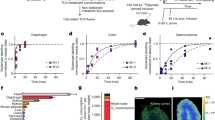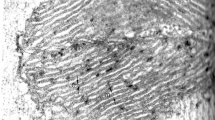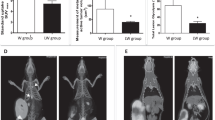Abstract
SINCE the original experiments of Warburg with slices of tumour there has been intense investigation of, and discussion about, a specific tumour energy metabolism1,2. This concept, originally characterized by high rates of aerobic and anaerobic glycolysis, has been extended to include certain ancillary features: a moderate respiratory rate with minimal increase in respiration following the addition of succinate and other respiratory substrates3, a respiratory quotient (R.Q.) between 0.75 and 0.90 signifying a mixed protein, fat, carbohydrate respiratory substrate4, and a protein-synthesizing system which effectively incorporates amino-acid anaerobically if glucose is present5. Up to the present time the major exceptions to the concept of a specific tumour metabolism have been certain normal tissues (renal medulla, jejunal mucous membrane, myeloid bone marrow and retina) which share one or more of the characteristics of the tumour slice2. Occasional mouse tumours have been observed which display active anaerobic glycolysis without aerobic glycolysis6, a finding which has been explained by the active respiratory rate and normal Pasteur effect of mouse tissues. The present communication is of particular interest because for the first time a rat tumour is described which displays very low rates of aerobic and anaerobic glycolysis.
This is a preview of subscription content, access via your institution
Access options
Subscribe to this journal
Receive 51 print issues and online access
$199.00 per year
only $3.90 per issue
Buy this article
- Purchase on Springer Link
- Instant access to full article PDF
Prices may be subject to local taxes which are calculated during checkout
Similar content being viewed by others
References
Warburg, O., Science, 123, 309 (1956). Weinhouse, S., Science, 124, 267 (1956).
Aisenberg, A. C., The Glycolysis and Respiration of Tumours (Academic Press, New York, 1961).
Elliott, K. A. C., Benoy, M. P., and Baker, Z., Biochem. J., 29, 1937 (1935).
Dickens, F., and Simer, F., Biochem. J., 24, 1301 (1930).
Quastel, J. H., and Bickis, I. J., Nature, 183, 281 (1959).
Dickens, F., and Weil-Malherbe, H., Cancer Res., 3, 73 (1943). Albert, Z., and Orlowski, M., J. Nat. Cancer Inst., 25, 443 (1960).
Morris, H. P., Sidransky, H., Wagner, B. P., and Dyer, H. M., Cancer Res., 20, 1252 (1960).
Potter, Van R., Pitot, H. C., Ono, T., and Morris, H. P., Cancer Res., 20, 1255 (1960).
Barker, J. B., and Summerson, W. H., J. Biol. Chem., 138, 535 (1941).
Burk, D., Behrens, O. K., and Sugiura, K., Cancer Res., 1, 733 (1941).
Aisenberg, A. C., Cancer Res., 21, 295 (1961).
Author information
Authors and Affiliations
Rights and permissions
About this article
Cite this article
AISENBERG, A., MORRIS, H. Energy Pathways of Hepatoma No. 5123. Nature 191, 1314–1315 (1961). https://doi.org/10.1038/1911314b0
Issue Date:
DOI: https://doi.org/10.1038/1911314b0
This article is cited by
-
Effect of sodium butyrate in combination with X0irradiation, chemotherapeutic and cyclic AMP stimulating agents on neuroblastoma cells in culture
Experientia (1979)
-
Carbohydrate metabolism in cancer cells and the molecular correlation concept
Die Naturwissenschaften (1968)
-
Functions of the cancer cell
Zeitschrift f�r Krebsforschung (1965)
-
Glucose Metabolism in a Low-Glycolysing Tumour, the Morris Hepatoma 5123
Nature (1962)
Comments
By submitting a comment you agree to abide by our Terms and Community Guidelines. If you find something abusive or that does not comply with our terms or guidelines please flag it as inappropriate.



